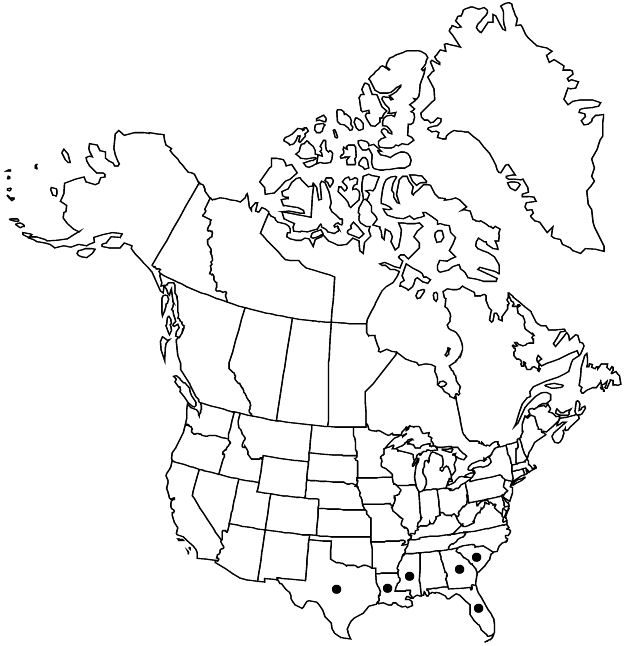Phyllanthus fraternus
Contr. Gray Herb. 176: 53. 1955.
Herbs, annual, monoecious, 1–4 dm; branching phyllanthoid. Stems: main-stems angled, not winged, glabrous; ultimate branchlets subterete, narrowly winged, ± scabridulous. Leaves on main-stems spiral, scalelike; stipules not auriculate, pale green to nearly white. Leaves on ultimate branchlets distichous, well developed; stipules not auriculate, pale green to nearly white; blade elliptic-oblong, 6–11 × 3–5 mm, base cuneate to obtuse, apex rounded, both surfaces glabrous. Inflorescences cymules or flowers solitary, unisexual, proximal with 2–3 staminate flowers, distal with 1 pistillate flower. Pedicels: staminate 0.2–0.5 mm, pistillate spreading in fruit, 1.3–2 mm. Staminate flowers: sepals 6, white to pale-yellow, flat, 0.4–0.7 mm; nectary extrastaminal, 6 glands; stamens 3, filaments connate throughout. Pistillate flowers: sepals 6, green with broad white margins, flat, (1–) 1.2–1.5 mm, 1-veined; nectary annular, 6–9-lobed. Capsules 2.1 mm diam., smooth. Seeds uniformly brown, 0.9–1.1 mm, longitudinally ribbed.
Phenology: Flowering and fruiting year-round.
Habitat: Fields, roadsides, gardens, other disturbed areas.
Elevation: 0–30 m.
Distribution

Introduced; Fla., Ga., La., Miss., S.C., Tex., s Asia (India), s Asia (Pakistan), also in West Indies, Bermuda, w Asia, Africa, Indian Ocean Islands
Discussion
Phyllanthus fraternus, native to Pakistan and northwest India, apparently was introduced into the United States in the 1950s, first in Louisiana, and has spread mainly along the Gulf Coast.
Selected References
None.
Lower Taxa
"elongating" is not a number."connate" is not a number."/2" is not declared as a valid unit of measurement for this property.